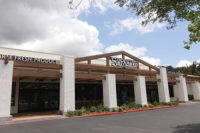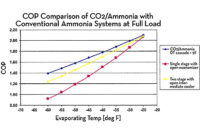Many supermarkets around the world are in the process of transitioning their commercial refrigeration equipment from HFCs to low-GWP refrigerants. For example, a supermarket in northern Italy, where regulation limits HFC use, chose to install a CO2-based refrigeration system in order to reduce its emissions. While CO2 systems do significantly reduce emissions, they can also consume large amounts of energy, which increases operating costs.
In collaboration with the commercial refrigeration equipment manufacturer, Epta, the new 1,500-square-meter Italian supermarket became the first in Europe to incorporate Energy Recovery’s PX G1300 energy recovery device into its CO2 system.
The PX G1300 was chosen for this green supermarket due to its ability to recycle pressure energy, allowing the system to run more efficiently. This enabled performance improvements at temperatures between 68°F and 104°F (20°C and 40°C), increasing annual efficiency as it allows the system to operate for longer periods. Epta also chose the PX G1300 for its simple design, low maintenance needs, and potential for improving rack stability at high temperature, an increasing challenge the location was facing.
After the PX G1300 was installed, the Italian supermarket saw efficiency improvements of more than 25% at 95°F to 104°F (35°C to 40°C) and more than 30% above 104°F (40°C), compared to a standard CO2 booster system. And while CO2 refrigeration systems typically lose efficiency as temperatures rise, the PX G1300 solved this issue by providing free compression power, increasing efficiency levels.
By integrating the PX G1300 into the supermarket’s CO2 refrigeration system, high-temperature rack stability was also achieved, which was important to the store when facing increased extreme weather conditions, including heat waves. Additional capacity provided by the PX G1300-enabled CO2 refrigeration system ensured smooth operation even beyond its original design point. The new northern Italy store is now prepared for future extreme energy variations, ensuring protection against refrigeration failure and revenue losses.





Report Abusive Comment